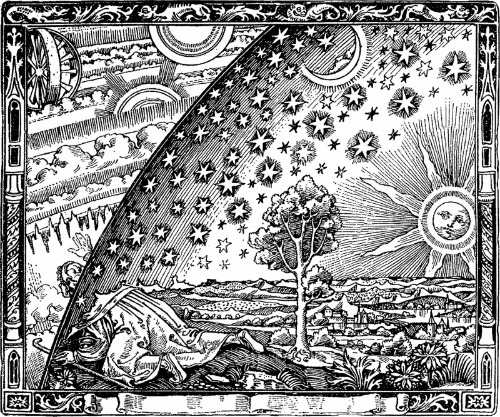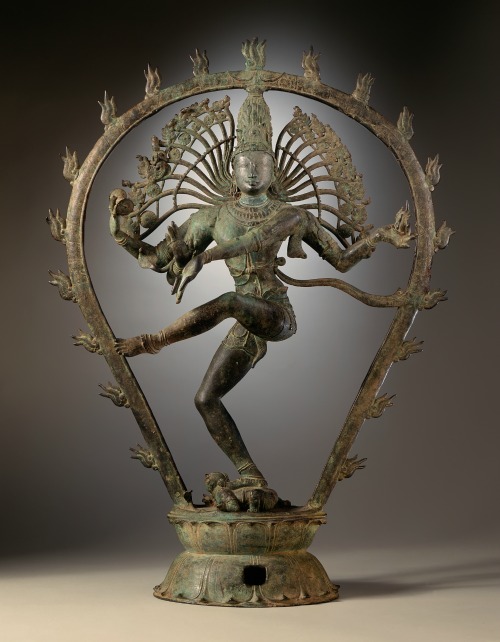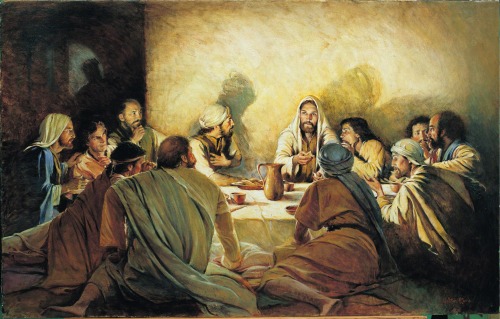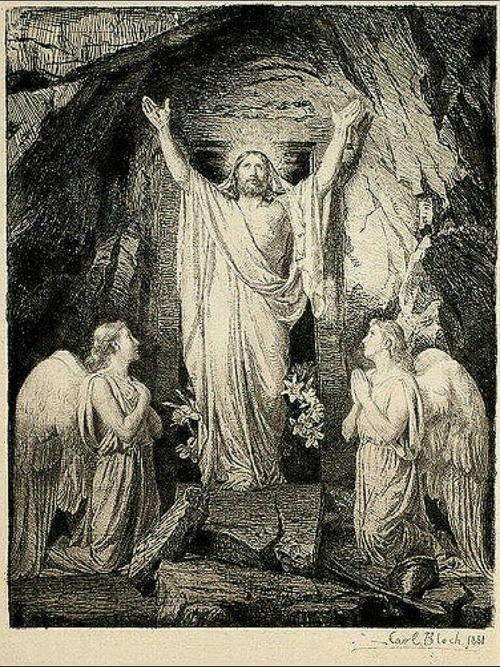Finding Renewed Meaning in the Sacrament through the 2nd Law of Thermodynamics
Put simply, the 2nd Law of Thermodynamics states that ordered things move towards disorder—entropy. Hot things grow cool. Yarn frays. Clean rooms get dirty. This tendency of all things to fall into disorder can be frustrating, saddening, and heartbreaking. But the magic inherent in this universe is that this entropy can be gamed and taken advantage of to create fabulous complexities. This curious feature that comes baked into the universe I see as a Divine Signature—a creative flair. Our most important ordinance, the Sacrament, is entropy in action.
A Poetic Universe
There is a certain poetry in this universe. A poetry that is, sadly, too seldom read and too seldom understood. Perhaps this is because the poetry is masked from plain thought by being hidden in plain sight. It is laid before our very eyes every second of every day. Each syllable, word, and stanza is written in the Earth around us. It is in the way water flows down a river. In waves crashing on a beach. Or in the way electrons dance around protons and neutrons as if planets orbiting a star.
The 2nd Law of Thermodynamics is the meter and thesis by which all this poetry is written. It holds the key to reading, understanding, and making plain the rest of the cosmic text. It is the rhythm and cadence by which the universe moves, dances, and eternally creates itself.
This isn’t just limited to the physical universe, though. Our spiritual lives are dependent on the promise held within it. The Sacrament, itself, is the spiritual realization of this 2nd Law of Thermodynamics. Through its workings we are able to be spiritually renewed, remade, and redeemed each week. Or more to the point, through the death and resurrection of Christ we are able to be spiritually reborn each week. But how does this work? How can destruction lead to re-creation?
The Poem Inherent in All Things

Eons ago, our Sun was born from a diffuse cloud of hydrogen gas—the dusty remains of long-dead stars. Today that Sun fuses that hydrogen gathered from its cosmic ancestors at unfathomable temperatures, radiating its stellar energies outwards. It takes roughly eight minutes for that sunlight to shine through our atmosphere. This stardust, in the form of light, passes through the photosynthetic leaves of a tree which it uses to create energy in the form of various sugars. But, the tree, knowing that its years are numbered, uses that energy to form seeds which will birth the next generation of trees. These seeds are stored within houses of sugars, cellulose, and water. A perfectly appetizing package—otherwise known as an apple.

Then take that apple. By itself, it is whole and complete. If we bite into it, we pierce its skin and break its flesh. As we chew, we further crush and bruise the apple’s flesh until it is fully broken and consumed. Once in our stomachs, our bodies will break it down further at the molecular level and assimilate it into our own bodies. No longer is the apple complete and whole—through violence we have destroyed it. But the apple’s destruction contributes to our re-creation. We get to live another day because an apple ceased to exist. Or more pointedly, the apple lives in us as we get to be alive another day. The apple and I are one.
This is the drum by which the entire universe moves. The atoms in your body were forged in the heart of a dying star billions of years ago. Those atoms were passed to you by sunlight, tree, and fruit. The breath in your lungs has been breathed by countless creatures big and small. The salt in your tears has traveled through earth, sea, and sky to stand as witness to your suffering and joy. Every meal you have ever eaten was once alive with the same Grace that beats your heart today. Through their mortality, you get to experience life again and they, through you, live on. You and the universe are one. This is God’s poem. This is the 2nd Law of Thermodynamics.
God’s Poetic Thesis
The thesis of God’s poetry is this: through death, there is life—through destruction there is re-creation. This signature is found in almost every physical process in the universe from the life cycles of stars to the eating of a simple meal. Etched into the very way of things, God gives us a subtle hint of things to come. And this hint becomes a full statement in the life of Jesus Christ. His life, death, and resurrection is the complete realization of this universal poetry.
So it is a curious thing that before His death, Jesus introduced the most important ritual ordinance as a meal. Eating is the most commonplace and ordinary of activities we do. Every human understands the importance of eating. It is a universal act. It is so universal and so ordinary that it can become mundane. Something we do without a thought. But each week, God has designated that the most important ritual ordinance we perform is a meal.

It is also the most readily available example of the 2nd Law of Thermodynamics. We bite, we chew, and we digest—further breaking once whole things down into their constituent bits. Then the magic of our bodies puts this poetic theme into action by utilizing the destruction toward creative ends. A violent but beautiful process.
This Sunday, watch again as the Priests prepare the sacrament. Watch how they break the bread and separate the water into consumable portions. Then be mindful as you chew each piece, further bruising and breaking down the bread—the Body of Christ. Feel as your mouth is moistened and your throat cooled by the water—the Blood of Christ. Soon your body will be at work dealing further violence by peeling off molecules one at a time. This Sacrament will nourish your body and sustain your bodily life.
But the Sacrament does more than simply feed our bodies. If the bread and water are symbols of the body and blood of Jesus, then as my body rebuilds itself with that matter, I am rebuilding myself with His divine life. Elder Christofferson said, “to eat His flesh and drink His blood is a striking way of expressing how completely we must bring the Savior into our life—into our very being—that we may be one.”

How does this happen? Over decades of participating in the ordinance of the Sacrament, I am slowly, piece by piece, molecule by molecule, receiving the image of Christ. I receive a New Life—His Life—given to me by Grace. Through this spiritual entropy, we become, in a sense, “little Christs.”
This is the drum by which the Gospel moves. Your new spiritual life was forged in the suffering of Gethsemane. Every new breath you take is because Jesus breathed His last on the cross of Calvary. And every hopeful moment your heart beats was won in a Garden Tomb. Through Jesus Christ, we can be spiritually re-created as Christ lives through us and we live through Him. He and we are one. This is God’s poem. This is the 2nd Law of Thermodynamics.


